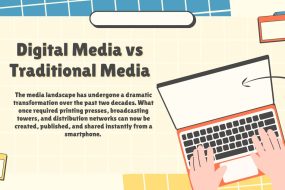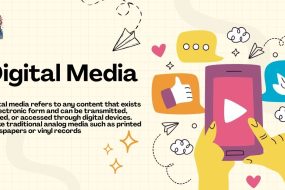
Media relations is a crucial branch of public relations (PR) that focuses on building and maintaining positive relationships between organizations and the media. It involves strategic communication with journalists, editors, bloggers, and other media professionals to secure coverage, manage reputations, and shape public perception.
In this comprehensive guide, we’ll explore what media relations truly means, how it differs from public relations, why it matters for businesses and organizations, and how to create a successful media relations strategy.
Why Is Media Relations Important?
Media relations plays a vital role in how the public sees a brand, organization, or individual. When done well, it increases credibility, brand awareness, and trust.
1. Builds Brand Credibility
Unlike paid advertisements, media coverage earned through media relations appears unbiased and more trustworthy to audiences. Journalistic validation holds a higher level of authority.
2. Expands Reach and Visibility
Through features, interviews, and articles, businesses can reach broader audiences they wouldn’t have access to through owned media channels.
3. Helps Control the Narrative
Media relations allows organizations to shape the public narrative by proactively sharing news and updates, and responding strategically during crises.
4. Establishes Thought Leadership
Consistent media exposure helps position company leaders as experts in their field, boosting reputation and influence within the industry.
Media Relations vs. Public Relations
Although media relations is a subset of public relations, they are not the same.
| Media Relations | Public Relations |
|---|---|
| Focuses on media outlets | Covers all stakeholder communication |
| Builds relationships with journalists | Engages customers, employees, investors |
| Aims for press coverage | Includes branding, crisis management |
| Reactive and proactive storytelling | Broader reputation management |
Public relations includes internal communication, events, influencer relations, and corporate social responsibility—media relations is just one strategic component.
Key Components of Media Relations
To understand what media relations involves, here are the foundational elements:
1. Media Outreach
Proactively reaching out to journalists or editors to pitch a story idea, press release, or expert commentary.
2. Press Release Distribution
Crafting newsworthy press releases and distributing them to the right media outlets for potential coverage.
3. Media Pitching
Sending personalized story ideas to journalists, explaining why the topic is relevant and timely for their audience.
4. Media List Building
Creating and maintaining a curated list of relevant media contacts, tailored to your industry and target audience.
5. Relationship Building
Developing trust-based, long-term relationships with media professionals to ensure ongoing collaboration.
6. Crisis Communication
Managing media inquiries during reputational challenges and ensuring a controlled, accurate message is presented.
Read this blog How to Merge Influencer Marketing with PR Strategy for Maximum Impact
How Media Relations Works

Effective media relations follows a strategic, structured process:
Step 1: Identify Your Objectives
What do you want to achieve? Is it brand awareness, launching a product, or positioning a spokesperson?
Step 2: Define Your Target Media
Research which media outlets your target audience consumes—TV, print, online, podcasts, or social media.
Step 3: Create a Media List
Include journalists who cover your industry or topic. Keep track of their contact details, beats, and recent work.
Step 4: Develop a Strong Pitch
Your story must be newsworthy, relevant, and well-aligned with the journalist’s beat. Personalize each pitch.
Step 5: Follow Up Professionally
If you don’t hear back, a polite follow-up after 2-3 days can reignite interest without being pushy.
Step 6: Track Media Coverage
Use media monitoring tools to track where and how your story was covered. Measure impact with reach, engagement, and sentiment metrics.
Best Practices for Successful Media Relations
1. Always Be Newsworthy
Journalists need stories that matter to their audience. Offer timely, original, and impactful angles.
2. Understand the Media Landscape
Know what types of content different outlets prefer. Don’t pitch a lifestyle story to a financial news outlet.
3. Personalize Every Interaction
Mass emails rarely succeed. Address each journalist by name, reference their past work, and tailor the story to their interests.
4. Be a Reliable Source
If you’re helpful, respectful, and fast in providing accurate information, journalists will come to you for future stories.
5. Offer Value First
Rather than just promoting your brand, focus on providing insights, data, trends, or expert commentary.
6. Keep Your Media Kit Ready
A professional media kit includes company background, leadership bios, product information, and high-resolution images.
Common Media Relations Tools

To streamline and enhance media relations efforts, organizations often use:
-
Media databases (e.g., Cision, Meltwater): for building media lists
-
Press release distribution services (e.g., PR Newswire, Business Wire)
-
Media monitoring tools (e.g., Google Alerts, Mention)
-
CRM systems for journalists to manage contacts and follow-ups
Media Relations in the Digital Age
The rise of digital platforms has significantly evolved media relations strategies:
Online Publications
More opportunities exist now to get featured in digital outlets, blogs, and online magazines.
Podcasts and Webinars
Journalists are not the only media creators. Podcasters and YouTubers now influence large audiences and deserve outreach too.
Social Media
Twitter (now X), LinkedIn, and Instagram are powerful channels to connect with journalists and build real-time relationships.
Influencer Media
Some influencers relation operate as media brands themselves. Strategic partnerships with them can amplify reach beyond traditional press.
How to Measure Media Relations Success
It’s not enough to just secure coverage. Measuring performance is essential.
Key Metrics to Track
-
Media impressions (estimated views or reads)
-
Sentiment analysis (positive, neutral, negative)
-
Share of voice (compared to competitors)
-
Backlinks and SEO value (if online articles include website links)
-
Audience engagement (comments, shares, mentions)
-
Business outcomes (increased traffic, leads, sales)
Use tools like Google Analytics, media monitoring platforms, and social listening to assess your results.
Challenges in Media Relations
While media relations is powerful, it comes with its challenges:
1. Media Saturation
Journalists receive hundreds of pitches daily. Standing out is harder than ever.
2. Declining Newsroom Resources
Fewer journalists are covering more beats, meaning limited time for individual pitches.
3. Misinformation and Trust Issues
Public trust in media is declining, and brands must work harder to build transparency.
4. Crisis Amplification
News and social media crisis move fast. A single misstep can turn into a full-blown reputational crisis.
The Future of Media Relations
As the media landscape evolves, professionals must adapt:
-
Data-driven pitching will help personalize outreach at scale.
-
AI tools will assist with media list creation and coverage analysis.
-
Owned media + earned media integration will become a central strategy.
-
Multimedia storytelling (videos, infographics, audio) will enhance pitch appeal.
Success in future media relations will depend on adaptability, authenticity, and alignment with emerging technologies. Media Relations as a Strategic Asset
Media relations is more than just press releases. It’s about relationship-building, storytelling, and strategic influence. When executed effectively, it can elevate brand reputation, build credibility, and drive real business impact.
Organizations of all sizes—from startups to global corporations—should treat relations as a core pillar of their public relations efforts. With the right strategy, consistency, and respect for the media ecosystem, your stories can reach far and influence wide.



















No Comments